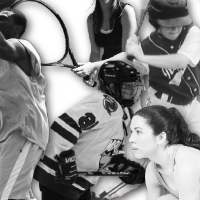Understand the Playing Field
Prospective college students who have an interest in participating in athletics at the college level really need to do their homework early in order to not find themselves drowning in the deep end of the pool. If college athletics is a realistic possibility, high school students should start to familiarize themselves with the various intercollegiate athletics sanctioning bodies and the associated levels of athletic play. Narrowing down the desired governing organization, if any, and appropriate level of play, if applicable, to fit the student’s talent and motivation is a first key step.
In the United States, there are three primary organizations that govern intercollegiate (meaning college versus college) sports. They are the National Collegiate Athletic Association (NCAA; www.ncaa.org), the National Association of Intercollegiate Athletics (NAIA; www.playnaia.org) and the National Junior College Athletic Association (NJCAA; www.njcaa.org).
Perhaps the most well-known, the NCAA consists of more than 1200 U.S. and Canadian colleges and universities. Generally speaking, the NCAA divides its sports into three tiers–Division I, Division II, and Division III, with Division I being considered the “highest” level of play, or in other words, the most competitive. Therefore, the most talented athletes are recruited to play at the Division I level. While there are a number of important differentiations between division levels, a very influential fact is the availability of scholarship money. While colleges and universities competing within the NCAA’s Division I and II levels can offer prospective students athletic scholarships (which may be combined with other forms of scholarship or aid, like for academic merit), Division III institutions do not and cannot offer scholarship money to prospective students who wish to participate in athletics. Student-athletes at Division III schools can, of course, still receive scholarship money for other reasons, like academic performance or artistic talent. Therefore, Division III students truly play for the love of the game, rather than any financial incentive.
The NAIA consists of several hundred smaller universities and colleges that wish to offer intercollegiate athletics, but for whatever reason, do not want to or qualify to be a member of the larger and voluntary-based NCAA. As of 2011, all member institutions are in the U.S. and Canada, yet the NAIA allows for members from other nations. NAIA schools can provide scholarship money to student-athletes for their athletic participation. While most of the NAIA sports are sports that are also part of the NCAA, the NAIA does sanction competitive cheering and dance, which is not an athletic area sanctioned by the larger NCAA. Most sports sanctioned by the NAIA only have one level, while some, like men’s and women’s basketball, field teams into two levels of play.
The NJCAA is the sanctioning body for community- and junior-colleges, which are two-year institutions, across the U.S. There are hundreds of member institutions with many more being added each year. Like its fellow sanctioning bodies, the NJCAA can give athletic scholarships to its players. The NJCAA sanctions a wide variety of men’s and women’s sports.
There are also other sanctioning bodies that may be of interest to the prospective student-athlete. These include the National Christian College Athletic Association (NCCAA), the
United States Collegiate Athletic Association (USCCA), and the California Community College Athletic Association (CCCAA).
Each sanctioning body, and potentially each level of play within said body, has varying and strict guidelines for student-athlete eligibility. Prospective student athletes should make themselves familiar with the guidelines and requirements for joining and playing for any college’s athletic program, based on that institution’s affiliated sanctioning body and or level of play. Failure to understand the appropriate processes and rules could hurt a prospective or current student-athlete’s opportunities to compete as a college athlete. Visiting each sanctioning body’s website and reading general information about eligibility is a great starting place for prospective student-athletes.
Once a prospective student-athlete gets a grasp on the playing field of intercollegiate athletics, he or she is in a much better position to consider whether this is a route that is truly desirable. Whether or not to pursue opportunities in intercollegiate athletics is a major decision. Working to be recruited can be a time-intensive process. Furthermore, being a successful student-athlete on and off the field, at any level,is a testament to one’s work ethic, time management, and, overall perseverance. Student-athletes need to know how to manage their time, balance and meet their emotional and physical needs, and, at times, advocate for themselves. While these actions are desirable for all college students, the fact is, many college athletes feel more daily pressure than a college student not participating in intercollegiate athletics. However, if a student has really done his or her research and appropriately analyzed which institutions fit him or her academically, socially, financially, and athletically, then participating in intercollegiate athletics is much more likely to be a very rewarding experience.






























